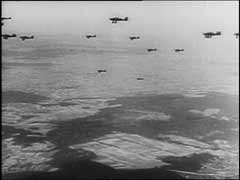You searched for: %E7%BA%A2%E5%8C%85%E7%90%86%E8%B4%A2%E9%87%91%E8%9E%8D%E7%B3%BB%E7%BB%9F%E5%AE%9A%E5%88%B6%E5%BC%80%E5%8F%91%E3%80%90TG%E7%94%B5%E6%8A%A5%EF%BC%9A%40EK7676%E3%80%91%E5%B9%B3%E5%8F%B0%E5%8C%85%E7%BD%91%E6%90%AD%E5%BB%BA%E7%BA%A2%E5%8C%85%E7%90%86%E8%B4%A2%E9%87%91%E8%9E%8D%E7%B3%BB%E7%BB%9F%E5%AE%9A%E5%88%B6%E5%BC%80%E5%8F%91%E3%80%90TG%E7%94%B5%E6%8A%A5%EF%BC%9A%40EK7676%E3%80%91%E5%B9%B3%E5%8F%B0%E5%8C%85%E7%BD%91%E6%90%AD%E5%BB%BA2IFWhYpA7g
<< Previous | Displaying results 51-100 of 199 for "%E7%BA%A2%E5%8C%85%E7%90%86%E8%B4%A2%E9%87%91%E8%9E%8D%E7%B3%BB%E7%BB%9F%E5%AE%9A%E5%88%B6%E5%BC%80%E5%8F%91%E3%80%90TG%E7%94%B5%E6%8A%A5%EF%BC%9A%40EK7676%E3%80%91%E5%B9%B3%E5%8F%B0%E5%8C%85%E7%BD%91%E6%90%AD%E5%BB%BA%E7%BA%A2%E5%8C%85%E7%90%86%E8%B4%A2%E9%87%91%E8%9E%8D%E7%B3%BB%E7%BB%9F%E5%AE%9A%E5%88%B6%E5%BC%80%E5%8F%91%E3%80%90TG%E7%94%B5%E6%8A%A5%EF%BC%9A%40EK7676%E3%80%91%E5%B9%B3%E5%8F%B0%E5%8C%85%E7%BD%91%E6%90%AD%E5%BB%BA2IFWhYpA7g" | Next >>
-
Oranienburg
ArticleThe Oranienburg concentration camp was established as one of the first concentration camps in Nazi Germany on March 21, 1933. Learn more

-
Bremen-Farge
ArticleLearn more about Bremen-Farge, a subcamp of Neuengamme where the majority of prisoners were used to construct an underground U-boat shipyard for the German navy.

-
Kristallnacht
ArticleOn November 9–10, 1938, the Nazi regime coordinated a wave of antisemitic violence. This became known as Kristallnacht or the "Night of Broken Glass." Learn more

-
Lublin ghetto
PhotoResidents of the Lublin ghetto. Poland, 1941-1942. (Source record ID: E9 NW 33/IV)
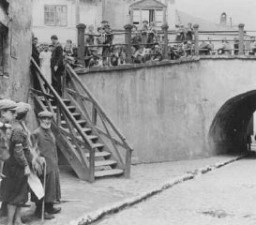
-
The Weimar Republic
ArticleThe Weimar Republic was a liberal democratic republic founded in Germany in the aftermath of WWI. Learn about the era’s political and economic crises and social trends.

-
Neuengamme
ArticleIn 1938, the Nazis established Neuengamme concentration camp. Learn more about camp conditions, medical experiments, and liberation.

-
Lodz
ArticleNazi authorities established the Lodz ghetto in 1940. Learn about living conditions and forced labor in the ghetto, as well as deportations to and from there.

-
The Rwanda Genocide
ArticleFrom April to July 1994, extremist leaders of Rwanda’s Hutu majority directed a genocide against the country’s Tutsi minority. Learn more

-
Jewish women at forced labor
PhotoJewish women deported from Bremen, Germany, are forced to dig a trench at the train station. Minsk, Soviet Union, 1941. (Source record ID: E9 NW 33/IV/2)

-
Lend-Lease
ArticleLearn more about the Lend-Lease Act, which was the American policy that extended material aid to the WWII Allied powers from 1941-1945.

-
The 69th Infantry Division during World War II
ArticleThe 69th Infantry Division participated in major WWII campaigns and is recognized for liberating the Leipzig-Thekla subcamp of Buchenwald in 1945.
-
Lithuania
ArticleAs part of the Holocaust, the Germans murdered about 90% of Jews in Lithuania. Read more about the tragic experience of Lithuanian Jews during World War II.

-
Jeno Muhlrad
ID CardJeno was the youngest of five children born to Jewish parents living in a suburb of Budapest. His father was a wholesale merchant who sold beer to restaurants and stores. After receiving a university diploma, Jeno became a pharmacist. He and his wife, Aranka, and their two children, Eva and Andras, shared a large old house in Ujpest with Jeno's father and other members of the extended family. 1933-39: Jeno's friends and family have helped him raise the large amount of money he needs to lease his own…

-
Dora Unger
ID CardDora, her parents, brother, aunt, uncle, and two cousins lived together in her grandfather's home in Essen, Germany. The Ungers were an observant Jewish family, and when Dora was 8, she began to regularly attend meetings of Brit HaNoar, a religious youth organization. 1933-39: In October 1938 a teacher, with tears in her eyes, came to Dora at the municipal pool, saying "Jews cannot swim here anymore." Just weeks later, on November 9, Jews were arrested and their property destroyed. A neighbor tried to…

-
Jeno Nemeth
ID CardJeno moved to Szentes from a tiny farming community near the city of Szolnok, where he and his two brothers had been born to Jewish parents. Jeno owned a store that carried groceries and hardware items. He lived in the southeast Hungarian town of Szentes. Jeno and his wife, Juliana, had two married daughters, Barbara and Margit. Their son, Desider, was a dentist in Szentes. 1933-39: Jeno and his wife work hard in their store. The Depression of the 1930s was devastating, but things are starting to get a…

-
Ravensbrück
ArticleLearn about conditions and the treatment of prisoners in Ravensbrück, the largest concentration camp for women in the German Reich.

-
Collaboration
ArticleTo perpetrate the Holocaust, Nazi Germany relied on the help of allies and collaborators from across Europe, including governments, institutions, and individuals.

-
Hidden Children: Hardships
ArticleParents, children, and rescuers faced daunting challenges once the decision was made for a child to go into hiding during the Holocaust.

-
Klaus Barbie: The Butcher of Lyon
ArticleKlaus Barbie, chief of the Gestapo in Lyon, France, was nicknamed the "Butcher of Lyon" for his brutal actions towards Jews and members of the French Resistance.
-
Law on the Head of State of the German Reich
ArticleThe Law on the Head of State of the German Reich was the last step in destroying democracy in interwar Germany and making Adolf Hitler a dictator. Learn more.
-
Nazi Persecution of Jehovah's Witnesses
ArticleJehovah's Witnesses were subjected to intense persecution under the Nazi regime. Read more to learn why and how the Nazi regime targeted them.

-
Theresienstadt
ArticleThe Theresienstadt camp/ghetto served multiple purposes during its existence from 1941-45 and had an important propaganda function for the Germans. Learn more.

-
Aliyah Bet
ArticleLearn more about Aliyah Bet, the clandestine immigration of Jews to Palestine between 1920 and 1948, when Great Britain controlled the area.

-
Persecution of Roma (Gypsies) in Prewar Germany, 1933–1939
ArticleBeginning in 1933, the Nazis persecuted Roma (often pejoratively called “Gypsies”) based on underlying prejudices and racism. Learn how this harassment escalated to genocide.

-
Ban on Jehovah's Witness Organizations
Timeline EventApril 1, 1935. On this date, the German government banned all Jehovah's Witness organizations.

-
Refugees Today
ArticleAs of mid-2022, there were about 27 million refugees. Learn more about these refugees, the violence they face, and the global impact of the refugee crisis.

-
Eleanor Roosevelt
ArticleEleanor Roosevelt, longest serving First Lady in US history, used her social and political influence to intervene on behalf of refugees before and during WWII.
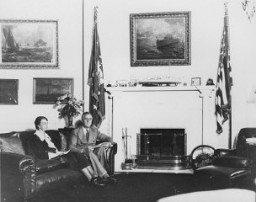
-
Art and Survival: György Beifeld's Visual Memoir from the Russian Front, 1942–1943
ArticleGyörgy Beifeld, a Jewish conscript in the Hungarian army, created a visual memoir of his experiences on the eastern front in 1942–1943 as a member of a forced-labor battalion .

-
Lackenbach (Roma internment and transit camp)
ArticleThe Lackenbach internment and transit camp for Roma, located in what had been eastern Austria, was a departure point for deportations to Lodz and Auschwitz.
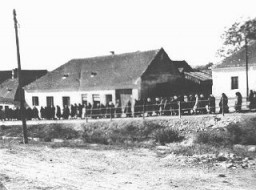
-
Lidice: The Annihilation of a Czech Town
ArticleGerman forces razed the town of Lidice in June 1942 in retaliation for the death of Nazi leader Reinhard Heydrich. Learn about the assassination and reprisal.

-
Berga-Elster ("Schwalbe V")
ArticleAt the Berga-Elster subcamp of Buchenwald, prisoners were forced to do dangerous and brutal work in tunnels to support fuel production for the German war effort.

-
München-Schwabing
ArticleLearn about the establishment and history of the Dachau subcamp München-Schwabing, and the role of Eleonore Baur (also known as Schwester Pia or Sister Pia).
-
Halle
ArticleHalle an der Saale was a satellite camp of Buchenwald concentration camp. It was established by the Nazis in Saxony, Germany in 1941.
-
Voyage of the St. Louis
ArticleIn May 1939, the German transatlantic liner St. Louis sailed from Germany to Cuba. Most of the passengers were Jews fleeing Nazi Germany. Learn more about the voyage.

-
Herzogenbusch Main Camp (Vught)
ArticleThe Herzogenbusch concentration camp in the Netherlands began functioning in January 1943. Learn about its establishment, administration, prisoners, and conditions there.

-
On the waiting list for American visas
DocumentSelmar and Elsa Biener joined the waiting list for US immigration visas in September 1938. Their waiting list numbers—45,685 and 45,686—indicate the number of people who had registered with the US consulate in Berlin. By September 1938, approximately 220,000 people throughout Germany, mostly Jews, were on the waiting list.
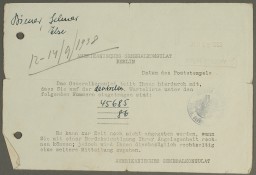
-
Wilek (William) Loew describes forced labor in Lvov
Oral HistoryWilek was the son of Jewish parents living in the southeastern Polish town of Lvov. His family owned and operated a winery that had been in family hands since 1870. Wilek's father died of a heart attack in 1929. Wilek entered secondary school in 1939. Soon after he began school, World War II began with the German invasion of Poland. Lvov was in the part of eastern Poland annexed by the Soviet Union. Although the Soviets took over Wilek's home and the family business, Wilek was able to continue his…

-
Hajj Amin al-Husayni: Arab Nationalist and Muslim Leader
ArticleHajj Amin al-Husayni claimed to speak for the Arab nation and the Muslim world and sought an alliance with the Axis powers during WWII. Learn more about his actions

-
Hodonín U Kunštátu (Hodonín bei Kunstadt) (Roma camp)
ArticleIn March 1942, the Hodonin camp was classified as a camp for Roma. It was a transfer station during deportation to Auschwitz-Birkenau. Learn about the camp and its history.

-
Aron Tabrys
ID CardAron was the second of six children born to Jewish parents in Vilna, a city known as a center of Jewish cultural life. He was called Arke by his friends and family. Aron's father supported his large family on the meager income of a chimney sweep. 1933-39: As a child Aron attended a Jewish day school, and then went on to attend a public secondary school. When he was 14 his father had an accident which rendered him blind, and Aron had to start working full-time to support the family. Aron belonged to an…

-
Eva Gredinger
ID CardEva was one of three children born to Jewish parents in Vertujeni, a Bessarabian town that was 90 percent Jewish. Eva attended a public school. Her family was religious, attending synagogue every day. Eva's father made his living as a kosher butcher, preparing chicken according to Jewish dietary laws. 1933-39: In 1936, when Eva was 15 years old, her family moved to Vysoka, where she later got a job as a seamstress. Vysoka was very different from her hometown. There were only about 15 Jewish families in…

-
Janusz Piotrowski
ID CardJanusz was the eldest of four children born to Catholic parents in Plock, a town located in a rural area north of Warsaw. His father was an accountant. Janusz attended local schools, and became active in scouting. 1933-39: Janusz went to Warsaw to study civil engineering. On September 1, 1939, the Germans began bombing Warsaw. One week later, all able-bodied men who had not been mobilized were directed to retreat east. On September 17, Janusz was 90 miles from the Romanian border. That night, the Soviets…

-
Tomasz (Toivi) Blatt
ID CardTomasz was born to a Jewish family in Izbica, a Polish town whose largely religious Jewish community comprised more than 90 percent of the population. Tomasz's father owned a liquor store. 1933-39: In September 1939, a drum sounded in the marketplace, calling the town to assemble for a news report. Germany had invaded Poland. More news arrived shortly; the Soviet Union was invading from the east. Tomasz and his family didn't know what to do. Some people said to run to the Soviet side; many, including his…

-
William Denson describes postwar trials of concentration camp personnel
Oral HistoryWilliam Denson graduated from the US Military Academy at West Point in 1934 and attended Harvard Law School. He returned to West Point to teach law from 1942 until 1945. In January 1945, Denson accepted the position of Judge Advocate General (JAG) in Europe and was assigned to US Third Army headquarters in Germany. He took part in more than 90 trials against Germans who had committed atrocities against downed American pilots. In August 1945, Denson became chief prosecutor for the US government at the…

-
William Denson describes counsel provided to accused war criminals
Oral HistoryWilliam Denson graduated from the US Military Academy at West Point in 1934 and attended Harvard Law School. He returned to West Point to teach law from 1942 until 1945. In January 1945, Denson accepted the position of Judge Advocate General (JAG) in Europe and was assigned to US Third Army headquarters in Germany. He took part in more than 90 trials against Germans who had committed atrocities against downed American pilots. In August 1945, Denson became chief prosecutor for the US government at the…

-
William Denson describes finding witnesses for the postwar trials of concentration camp personnel
Oral HistoryWilliam Denson graduated from the US Military Academy at West Point in 1934 and attended Harvard Law School. He returned to West Point to teach law from 1942 until 1945. In January 1945, Denson accepted the position of Judge Advocate General (JAG) in Europe and was assigned to US Third Army headquarters in Germany. He took part in more than 90 trials against Germans who had committed atrocities against downed American pilots. In August 1945, Denson became chief prosecutor for the US government at the…

-
The Search for Perpetrators
ArticleThousands of Nazi criminals were never arrested. Learn more about the postwar efforts to bring Nazi perpetrators to justice.

-
Melk
ArticleLearn about the establishment of and conditions in Melk, a subcamp of the Mauthausen camp system in Austria.

-
Westerbork
ArticleThe Westerbork transit camp, located in the German-occupied Netherlands, served as a temporary collection point for Jews in the Netherlands before deportation.

-
German air campaign in the Low Countries
FilmThe Junkers (Ju) 87, known as the "Stuka," spearheaded the Blitzkrieg ("lightning war") attacks that were decisive in the western campaign in 1940. Stuka dive-bombers closely supported German ground forces. They destroyed enemy strong points, aircraft, and airfields, and spread panic in rear areas. Although slow and easily shot down by Allied fighters, the Stukas proved devastatingly effective in the German invasions of Poland and western Europe, where Germany enjoyed superiority in the air. Stukas caused…
